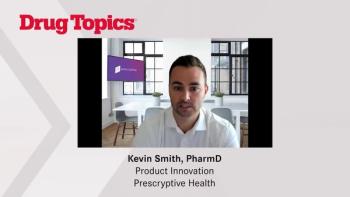
Software creates daily MARs, reducing drug errors
Reducing the interim between the final entry on a medication administration record and printing out the MAR can result in a significant improvement in patient safety. That's what a small rural hospital in Pennsylvania discovered using a software application that created virtually up-to-the-minute daily MAR printouts. By decreasing lag time from more than two hours to less than 15 minutes, the hospital pharmacy reduced medication errors by 40%.
Reducing the interim between the final entry on a medication administration record and printing out the MAR can result in a significant improvement in patient safety. That's what a small rural hospital in Pennsylvania discovered using a software application that created virtually up-to-the-minute daily MAR printouts. By decreasing lag time from more than two hours to less than 15 minutes, the hospital pharmacy reduced medication errors by 40%.
"We looked aggressively at medication errors and found that in just the time between when we took the last order for our 9:30 P.M. batch printout and our midnight MAR distribution to nurses, about 100 changes to med orders occurred throughout the hospital," said Walt McGuire, assistant director of pharmacy at Latrobe Area Hospital (LAH), a 250-bed teaching hospital in Latrobe, Pa., about 40 miles southeast of Pittsburgh.
The delay was a significant ongoing problem. "The lag made nurses very unhappy and was a potential threat to patient safety. Every time an order differed from what the nurse found to be correct, that was a medication error we were completely accountable for," said McGuire.
In addition to improved quality, the hospital is saving about $18,000 a year by eliminating preprinted forms and printing the MARs directly at the nursing stations. This also eliminates distribution costs and reduces man-hours, said LAH information technology executives. "That's with the redesign of just one form," said Harvey Wright, LAH senior applications support administrator. "This is in addition to the labor savings in other departments."
The software is from Optio Software, headquartered in Alpharetta, Ga. The hospital uses a product named OptioMedForms, which integrates and electronically delivers customized forms, including admission records, payroll and billing checks, radiology forms, patient wristband readings, and MARs.
"They needed flexibility and an adjustment in the flow design of existing software gave them that," said Ben Lazar, Optio's director of market development. "The kind of problems they have are typical of many hospitals today. Reimbursements are declining as costs escalate, including an increasing amount of paperwork from the many points of contact once a patient enters the hospital. And as paperwork increases, so does the potential for errors."
LAH has been using Optio software since 2000 in an effort to reduce paperwork complexity, said Wright. The software is integrated with LAH's other hospital applications. When LAH first implemented MedForms, it was particularly interested in eliminating preprinted forms and developing a method for combining patient demographic in-formation with patient care documents. "Our existing process was very time-consuming because it required demographics to be manually collected on every form at each point of patient contact," he said. In an average month, LAH processes more than 80,000 documents through MedForms, including admission forms, medication administration records, consent forms, face sheets, physician and radiology reports, nursing flow sheets, and mental health forms. In addition to the pharmacy, MedForms is used in the emergency room, admitting, radiology, all nursing floors, outpatient areas, physician practice management, and the business office.
Once the pharmacy department-in an examination of possible methods of reducing errors as part of its Joint Commission on Accreditation of Healthcare Organizations accreditation process-determined that the more than two-hour lag time in its MAR generation and distribution process was adversely affecting patient safety, the hospital's IT department realized it could design a solution by simply upgrading what it already had in place.
"What happened is a good example of how the elimination of preprinted forms improved quality and saved money," said Wright. LAH was using the McKesson Series Hospital Information System to batch print, then manually sort and deliver the MARs to the patient floors in time for midnight use. Now they run the MAR just before midnight, and the documents are automatically routed to the patient's location.
When pharmacy redesigned its MAR through MedForms, the positive results were virtually immediate. In the first month, a review of the accuracy of the MARs demonstrated the 40% drop in errors. "The elimination of the lag time didn't fix everything, but it made a big improvement," said McGuire. More information is available at
Newsletter
Pharmacy practice is always changing. Stay ahead of the curve with the Drug Topics newsletter and get the latest drug information, industry trends, and patient care tips.




